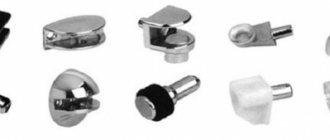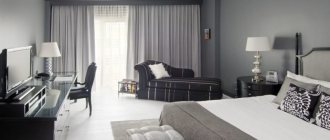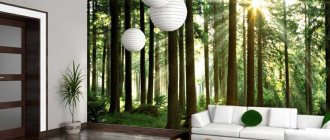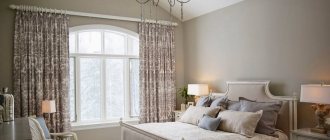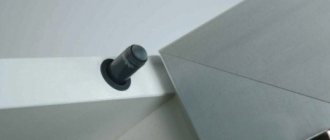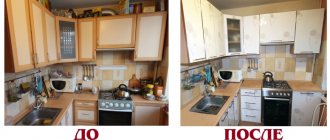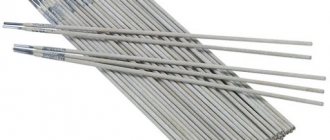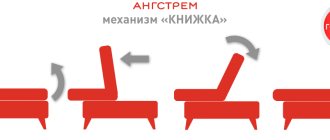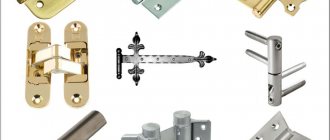Home / Different composition
Back
Published: 11/15/2020
Reading time: 3 min
0
538
At first, exquisite dresses for rich young ladies were made from thin fabric resembling lace. In the old days, only representatives of the aristocracy knew what tulle was. Now curtains made of translucent veil, flowing chiffon, and airy mesh, which are used when decorating windows, bring harmony to the interior, create a calm atmosphere, and complement any design project.
- 1 History
- 2 Fabric production
- 3 Types of tulle fabrics, their compositions and properties
- 4 Pros and cons of fabric
- 5 Application of the canvas
- 6 Tips for choosing fabric for clothing and interior design
- 7 Care
History of origin
It is not known exactly when tulle appeared in Europe. It is believed that the fabric, from which clothes were worn already in the 13th century, was invented in England. French craftsmen were ordered to produce unprecedented material by Louis XI, who ruled the country in the 15th century. The king wanted the bride's face to be hidden from prying eyes by a thin fabric that would not prevent the girl from seeing through it. The weightless material was made by hand in the town of Tulle, which gave it its name.
In the Middle Ages, tulle began to replace lace, which was not inferior in appearance, and the cost of the new fabric was lower. In the 19th century, they began to sew not only clothes from translucent material, but also curtains for windows.
Number of layers
Forget about hanging tulle the size of the window. An abundance of draperies and tiers will complicate the design. In the photo, the tulle samples for the living room look especially impressive if you lay out the draperies correctly and play with color.
The stores offer a wide range of products in various colors and sizes. All samples correspond to standard dimensions in width and height, which can spoil the interior.
To make the combination of tulle in the living room interior as natural as possible, but at the same time beautiful, you should use the help of an atelier or professional craftswomen.
A product made to individual sizes is superior to standard options.
Note!
- Mirrors in the living room: proper placement of mirrors in the living room. Mirror lighting. Visual increase in space. Photo and video reviews from designers
Arch in the living room: advantages and disadvantages of an arch in the living room. Types and design of the arch. Photo and video instructions for making an arch for the living room
Modern living rooms: TOP-180 photos and videos of design options for modern living rooms. Tips for choosing the style and color scheme for the living room
Fabric production
For a long time, tulle was made by hand from natural fibers, but with the beginning of the scientific and technological revolution of the 20th century, the fabric production process was mechanized. Synthetics began to be used as raw material for fabric, and new types of tulle appeared.
Attention! The finest and most expensive fabric, which shimmers in the sun and under artificial light, is still made from silk, not from chemical fibers.
To make patterned tulle, a fabric is woven on special machines from bulky threads, for which polyester and viscose are used. Smooth varieties of fabric are made from flexible polyamide fibers, which give the material elasticity, as well as from a mixture of artificial and natural raw materials. When asked what types of tulle there are, they usually answer that they are matte and transparent, silk and nylon, but few know how airy fabric is obtained.
The production of matter goes through 3 stages:
- Warp threads are wound on rollers, and weft threads are wound on bobbins.
- The fabric is woven on lace and curtain machines.
- Carry out finishing work.
At the factory, tulle is bleached or boiled, soaked in a special solution, and passed through hot calenders. After finishing procedures, the material acquires softness and elasticity, and becomes pleasant to the touch.
What standards are used in production? What do they take into account?
The production of curtain-tulle fabrics refers to GOST 20823-90, which describes the requirements for the manufacture of the material:
- Change of finished fabrics after wet cleaning – no more than 5.0% for warp and 2.0% for weft.
- The skew of the canvas (with a nominal sample length of 10 m) is no more than 2.0%.
- Color change – no more than 6.0%.
- The mass fraction of sizing agent for synthetic fabric is at least 1%, for cotton and mixed fabric - at least 2.5%.
You can verify the quality of the material by reading the indicators on the manufacturer’s label and comparing them with the technical requirements.
Types of tulle fabrics, their compositions and properties
Single-color and multi-colored fabrics used in the interior are decorated with lace and embroidery and differ in the way they are weaved. For sewing curtains and curtains that are suitable for both classic design and for decorating a room in a loft, minimalism or country style, use linen tulle . Translucent fabric made from natural fibers diffuses sunlight, does not accumulate dust, allows air to pass through, and does not cause allergies. Matte tulle curtains wrinkle quickly and require frequent ironing, without which they look unpresentable.
Synthetic fibers are added to natural fabric, which add shine and smoothness. Fabric with lavsan does not wrinkle. Linen tulle drapes and holds its shape. The structure of polyester fibers is imitated like vegetable fabric.
Among the variety of tulle materials, flowing translucent chiffon is often chosen to update the interior. Curtains made of fabric with a rough or smooth surface:
- Combine with other decorative elements.
- Allows air and light to pass through.
- Suitable for designing multi-layer compositions.
- Visually increase the space.
Silk and cotton fibers, viscose and nylon are used to make chiffon.
Elegant organza does not fade in the sun, does not wrinkle, forms elegant folds, and looks elegant. Curtains made of translucent fabric produced using weaving technology, in which threads of silk, polyester and viscose are tightly twisted, surprise with bright patterns, embroidery, and add lightness to the interior.
Author:
Zakharova Nina Afanasyevna
I hope you like my article! If you find any shortcomings, just write to me about it! I am always ready for a conversation and will answer any questions you have, ask them!

